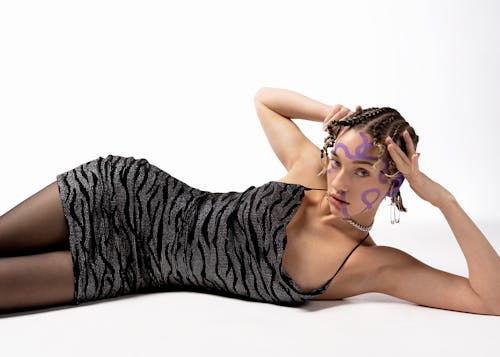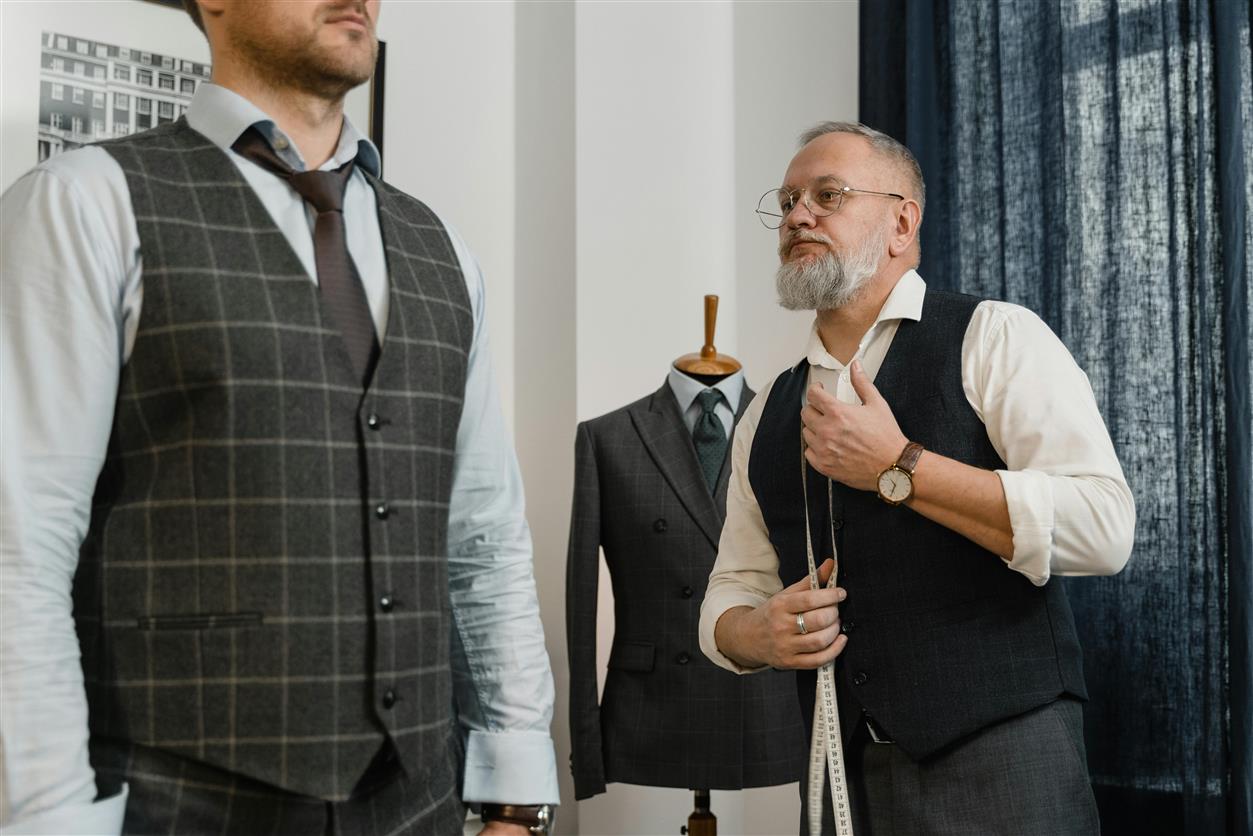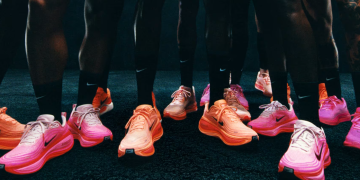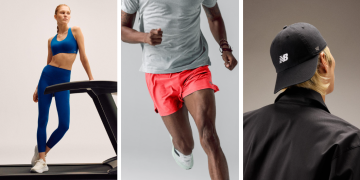
Achieving a flawless look often hinges on the fit of your clothing. Well-tailored garments not only enhance your appearance but also boost your confidence by ensuring you look polished and put-together. Whether you’re dressing for a formal event, a casual day out, or professional settings, understanding how to choose and achieve the perfect fit is crucial. This comprehensive guide delves into tailoring tips, helping you achieve a flawless look with garments that fit you impeccably.
1. Understanding the Importance of Fit
1.1. The Impact of Fit on Appearance
- Enhanced Silhouette: Proper fit accentuates your natural body shape, creating a flattering silhouette. Well-fitting clothes highlight your best features and ensure that your outfits look cohesive and stylish.
- Comfort and Confidence: A good fit not only looks better but also feels more comfortable. Clothes that fit well allow for ease of movement and boost confidence, as you’re less likely to be adjusting or self-conscious about your appearance.
1.2. The Role of Tailoring
- Customization: Tailoring involves altering garments to fit your unique body measurements. This process transforms off-the-rack clothing into custom-fit pieces that cater specifically to your shape and style preferences.
- Quality Enhancement: Tailoring can improve the quality and longevity of your garments. By making adjustments, you ensure that clothes wear and drape better, extending their lifespan.
2. Key Areas to Focus On
2.1. Suit Jackets
- Shoulders: The shoulders of a suit jacket should fit comfortably without excessive padding or sagging. Ensure the shoulder seams align with your natural shoulder line and do not extend beyond it.
- Chest and Waist: The jacket should drape smoothly over your chest and waist. It should be snug enough to avoid excess fabric but loose enough to allow for movement. Look for a slight taper at the waist for a tailored look.
- Sleeve Length: Jacket sleeves should end just above your wrist bone, allowing a small portion of your shirt cuffs to show. Ensure sleeves are not too long or too short to maintain a balanced appearance.
2.2. Trousers
- Waist: Trousers should sit comfortably at your natural waist, neither too tight nor too loose. The waistband should fit snugly without causing discomfort or leaving gaps.
- Inseam: The inseam length determines how trousers fall on your legs. Aim for a slight break or fold where the trousers meet your shoes. This length ensures a clean and polished look.
- Leg Fit: Consider the fit through the thigh and calf. Trousers should follow the natural lines of your legs without being overly tight or baggy.
2.3. Shirts
- Collar: The collar should fit comfortably around your neck, allowing for a finger’s width of space. It should lie flat against your neck and shoulders without gaping or tightening.
- Sleeves: Shirt sleeves should end at the wrist bone, allowing for a slight allowance for movement. The sleeve cuffs should be visible when wearing a jacket, typically around half an inch.
- Body Fit: Shirts should fit comfortably through the torso, with enough room to move but without excess fabric bunching at the waist. Look for a slight taper for a tailored appearance.
2.4. Dresses
- Bust and Waist: Dresses should fit snugly at the bust and waist without pulling or gaping. Ensure there is enough room to move comfortably and that the dress follows your natural curves.
- Hips and Length: The skirt or bottom portion of the dress should fit well at the hips and fall to the desired length. Consider the dress’s overall silhouette and how it complements your body shape.
3. Tailoring Tips and Techniques
3.1. Finding a Tailor
- Reputation and Experience: Seek out a reputable tailor with experience in altering the type of clothing you need. Personal recommendations, online reviews, and portfolio reviews can help in selecting a skilled professional.
- Initial Consultation: Schedule a consultation to discuss your tailoring needs. A good tailor will assess your garments, provide recommendations, and offer a clear understanding of the alterations required.
3.2. Common Alterations
- Hemming: Adjusting the length of trousers, skirts, or dresses to achieve the desired fit and prevent dragging. Hemming also ensures that the garment falls at the right spot on your legs or shoes.
- Taking In or Letting Out: Adjusting the waist or side seams to modify the fit of the garment. Taking in or letting out helps achieve a more customized fit around the body.
- Sleeve and Collar Adjustments: Altering sleeve length, collar fit, and cuff size to ensure the right proportions and comfort. These adjustments enhance the overall look and feel of the garment.
3.3. DIY Alterations
- Basic Techniques: Learn basic sewing techniques for minor alterations. Simple tasks like shortening hems, adjusting waistbands, or fixing loose buttons can be done at home with basic sewing skills.
- Tools and Supplies: Invest in essential sewing tools such as a needle, thread, fabric scissors, and measuring tape. These tools will assist in making small adjustments and repairs.
4. Fit Considerations for Different Body Types
4.1. Slim or Tall Builds
- Customizing Proportions: For slim or tall individuals, focus on achieving the right proportions in length and fit. Tailoring can help adjust sleeve and trouser lengths and create a balanced look.
- Enhancing Fit: Look for slim-fit or tailored styles that complement your body shape. Adjustments can ensure that clothing does not appear overly loose or long.
4.2. Curvy Builds
- Accentuating Curves: Tailoring can help accentuate curves and create a flattering silhouette. Focus on adjusting the waist and bust areas to enhance the fit and ensure comfort.
- Avoiding Gaps: Ensure that garments fit snugly at the bust and waist to avoid gaps. Tailoring can address these issues and provide a more customized fit.
4.3. Athletic Builds
- Balancing Fit: For athletic builds, focus on achieving a balanced fit that accommodates muscular build while maintaining a tailored appearance. Adjustments may be needed in the chest, shoulders, and thighs.
- Comfort and Mobility: Ensure that clothing allows for movement and does not restrict your range of motion. Tailoring can help achieve a fit that accommodates an active lifestyle.
5. Maintaining Tailored Clothing
5.1. Care and Maintenance
- Proper Cleaning: Follow care instructions for tailored garments to preserve their fit and appearance. Dry cleaning may be necessary for certain fabrics to maintain their shape and structure.
- Regular Checks: Periodically check for any changes in fit due to weight fluctuations or alterations in body shape. Revisit your tailor for adjustments as needed.
5.2. Storage Tips
- Hanging Garments: Use padded hangers for jackets and shirts to maintain their shape and prevent shoulder dimples. Store trousers and skirts on hangers with clips to prevent creasing.
- Avoiding Wrinkles: Store garments in breathable garment bags or use fabric protectors to prevent dust and wrinkles. Ensure that clothing is stored in a cool, dry place.
6. The Future of Tailoring
6.1. Technological Advances
- Smart Fabrics: Advances in textile technology, such as smart fabrics and 3D printing, are shaping the future of tailoring. These innovations offer new possibilities for custom-fit garments and enhanced functionality.
- Virtual Tailoring: Virtual fitting technology is becoming more prevalent, allowing customers to try on and customize garments digitally. This technology offers a new approach to achieving a perfect fit.
6.2. Sustainable Practices
- Eco-friendly Tailoring: The fashion industry is increasingly focused on sustainability. Sustainable tailoring practices, such as using eco-friendly materials and reducing waste, are becoming more important in achieving a flawless look.
- Ethical Considerations: Tailoring that prioritizes ethical practices ensures fair labor conditions and supports responsible production. Consider supporting tailors and brands that adhere to ethical standards.

7. Conclusion
Choosing the perfect fit involves a combination of understanding garment construction, tailoring techniques, and personal preferences. By focusing on key areas such as suits, trousers, shirts, and dresses, and employing expert tailoring tips, you can achieve a flawless look that enhances your appearance and boosts your confidence. Whether you’re investing in high-quality clothing or making adjustments to your existing wardrobe, tailoring plays a crucial role in achieving the ideal fit. Embrace these tips and techniques to ensure your clothing fits impeccably, making every outfit a testament to your impeccable style.










